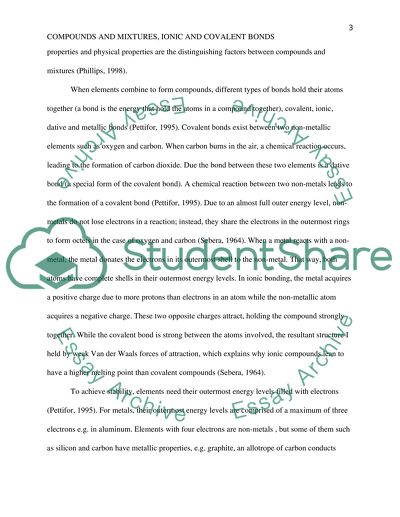Mixture and compound Essay Example | Topics and Well Written Essays - 750 words. Retrieved from https://studentshare.org/chemistry/1468316-mixture-and-compound
Mixture and Compound Essay Example | Topics and Well Written Essays - 750 Words. https://studentshare.org/chemistry/1468316-mixture-and-compound.


